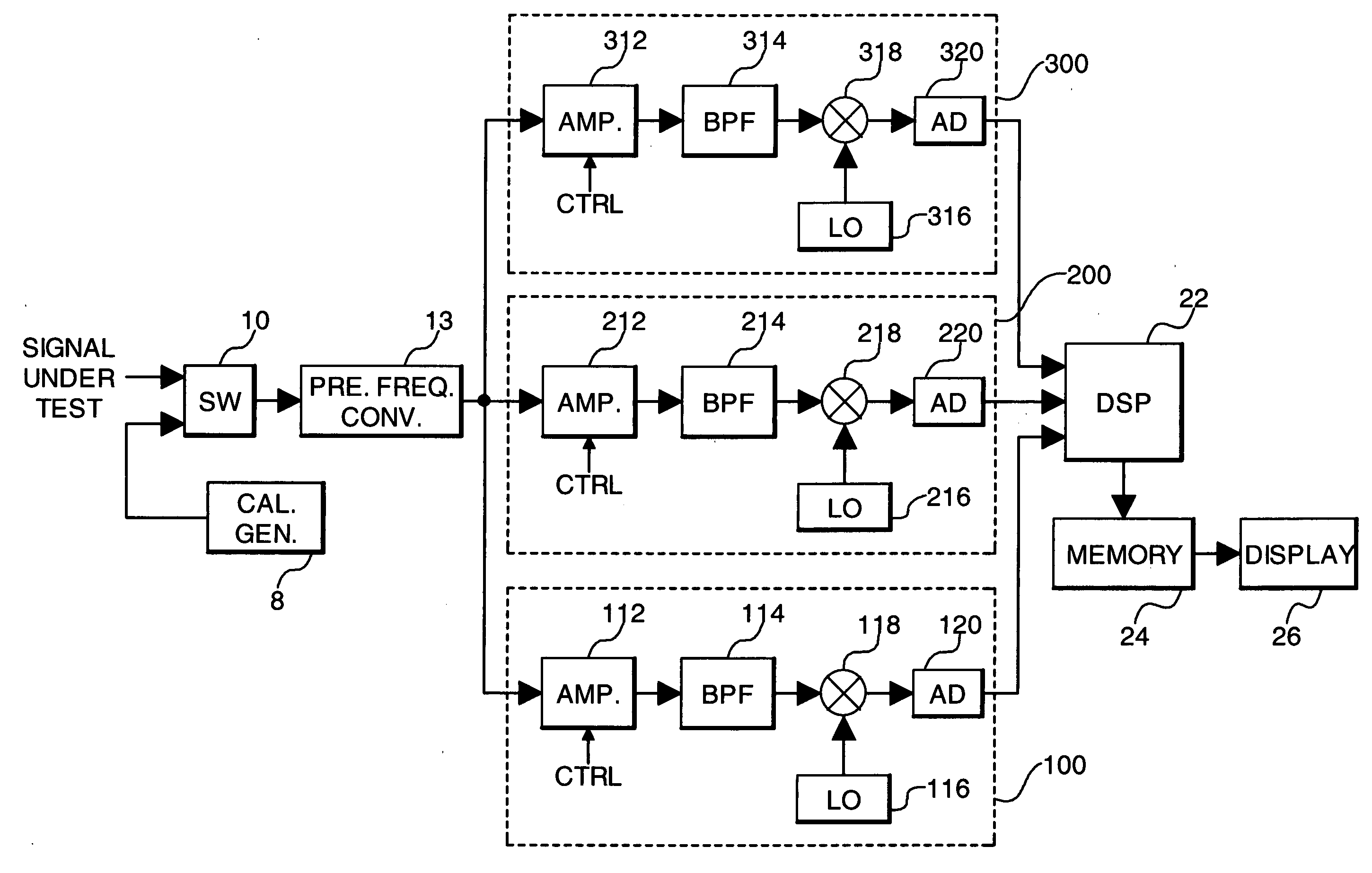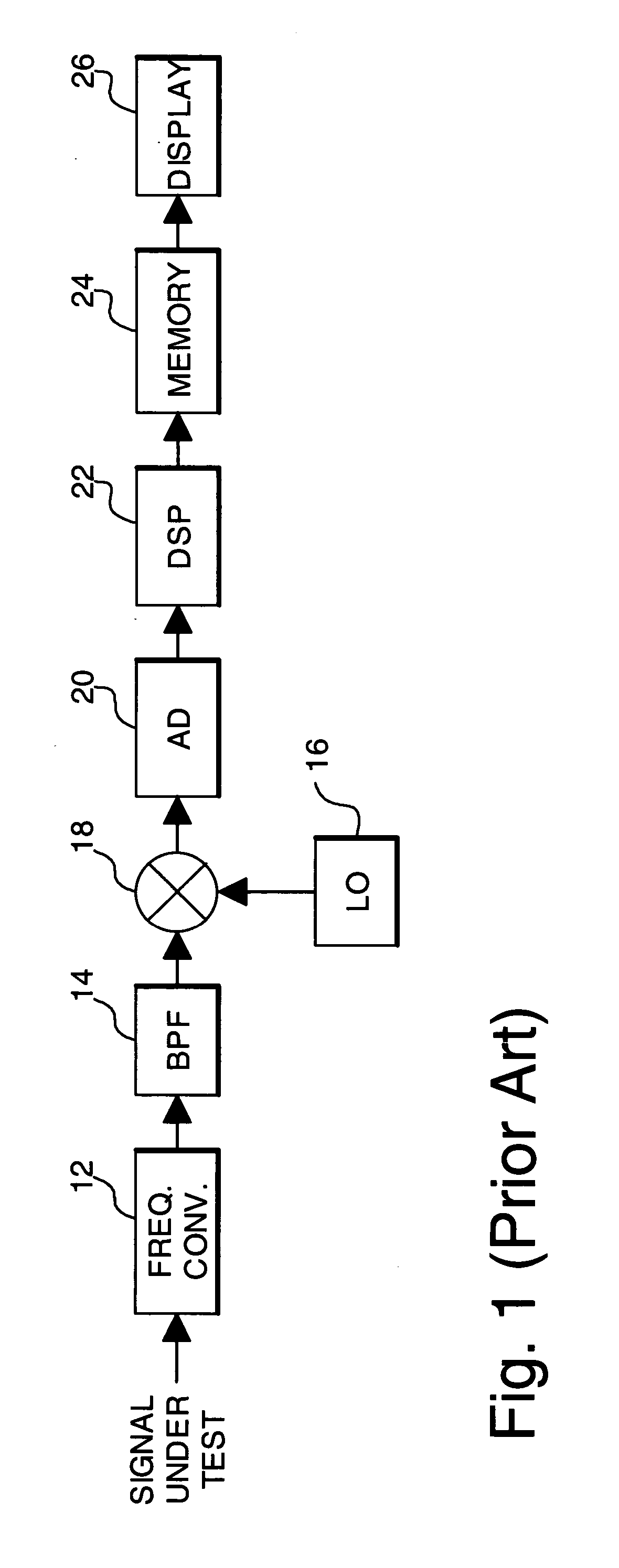Wideband signal analyzer
a signal analyzer and wideband technology, applied in the field of signal analysis, can solve the problems of reducing the number of bits provided by the adc b>20/b>, increasing the distortion characteristics of any if amplifiers prior to the adc, and reducing the dynamic rang
- Summary
- Abstract
- Description
- Claims
- Application Information
AI Technical Summary
Problems solved by technology
Method used
Image
Examples
Embodiment Construction
[0013] Referring now to FIG. 2 a wideband signal analyzer is shown having a plurality of frequency conversion paths 100, 200, 300 to convert a signal under test in terms of different contiguous frequency bands to produce final IF signals just prior to digitization. ADCs 120, 220, 320 digitize the output of the frequency conversion paths, with the sampling frequencies of the ADCs limiting the bandwidths of the paths and the number of points from the digital data conversion. Therefore each group of time domain data from the frequency conversion paths 100, 200, 300 is interpolated by a digital signal processor (DSP) 22 to increase the number of data points in each group to satisfy a Nyquist condition necessary for a combined bandwidth of the frequency conversion paths. Time domain data of the necessary number of points are extracted from the interpolated time domain data groups by the DSP 22 to calculate a suite of frequency domain data.
[0014] In more detail a switch circuit 10 select...
PUM
 Login to View More
Login to View More Abstract
Description
Claims
Application Information
 Login to View More
Login to View More - R&D
- Intellectual Property
- Life Sciences
- Materials
- Tech Scout
- Unparalleled Data Quality
- Higher Quality Content
- 60% Fewer Hallucinations
Browse by: Latest US Patents, China's latest patents, Technical Efficacy Thesaurus, Application Domain, Technology Topic, Popular Technical Reports.
© 2025 PatSnap. All rights reserved.Legal|Privacy policy|Modern Slavery Act Transparency Statement|Sitemap|About US| Contact US: help@patsnap.com



